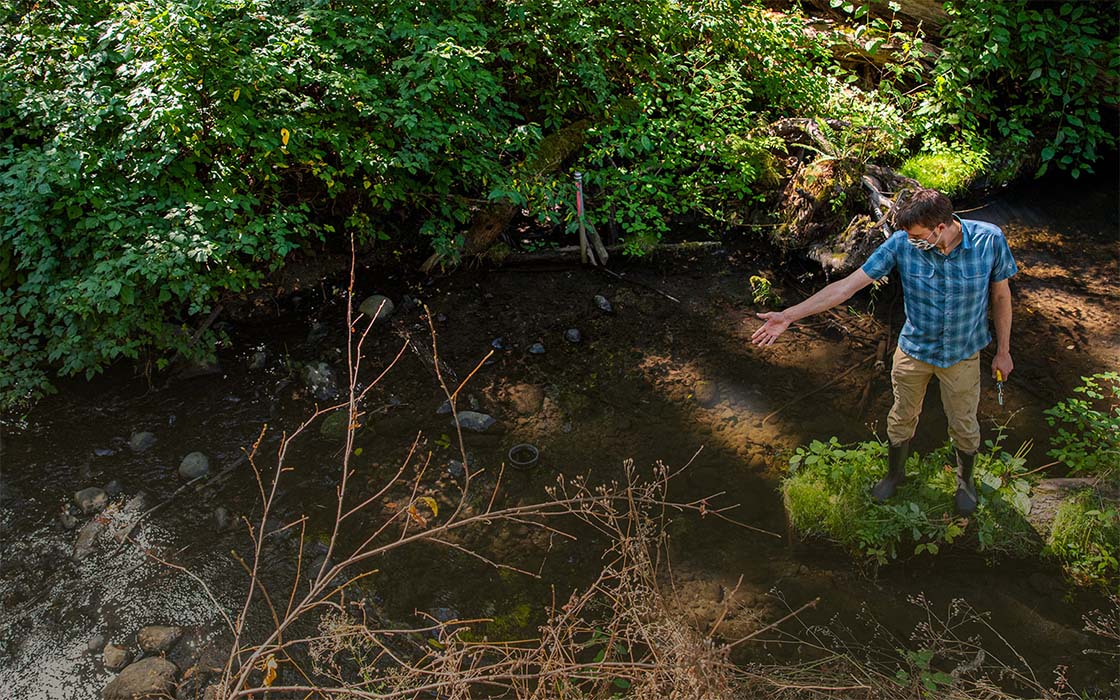
$3.2M for Puget Sound Institute and Center for Urban Waters funds CEC, 6PPD and wastewater research
Six grants from EPA and Puget Sound Partnership will go toward understanding and reducing emerging threats from toxic chemicals in Puget Sound.
UW Tacoma’s Puget Sound Institute (PSI) and its parent organization the Center for Urban Waters (CUW) are the recipients of more than $3.2 million dollars in grants this month from the U.S. Environmental Protection Agency and Washington’s Puget Sound Partnership. The funds will go toward understanding and reducing emerging threats from toxic chemicals in Puget Sound.
The grants — six in total — will support projects based at CUW and PSI labs at UW Tacoma. These include:
- Two grants totaling approximately $940,000 to study the occurrence and impacts of contaminants such as pharmaceuticals and personal care products found within the White-Puyallup and Stillaguamish watersheds (led by PSI’s Dr. Andy James).
- Three studies receiving a combined $1.3 million dollars to continue research into the management and effects of the highly toxic chemical derivative 6PPDQ from tires (led or co-led by CUW’s Dr. Ed Kolodziej).
- Approximately $1 million dollars to study innovative ways to remove and destroy PFCs from wastewater (led by PSI Director Dr. Joel Baker).
The research builds on earlier work at CUW and PSI including the discovery of 6PPDQ (aka 6PPD-quinone), a chemical from preservatives in automobile tires that has emerged as a threat to coho salmon and other species. These field studies will focus on the occurrence of the chemical in the South Sound and in King County. In the South Sound, Ed Kolodziej is working with Tribal and community partners to look at the impacts of the chemical on small watersheds especially important to Tribal nations. “This work will help to define how roads, tires, and humans are polluting ecologically- and culturally-sensitive watersheds with 6PPDQ and similar previously unprioritized contaminants,” according to a summary of the award. Kolodziej will also work with Jen McIntyre (Washington State University-Puyallup) and John Hansen and Justin Greer (U.S. Geological Survey) to investigate the impacts of spring storm events on sensitive juvenile coho salmon, a potential emerging salmonid health issue.
Andy James and his colleagues will address information gaps associated with a class of chemicals known as “CECs,” or contaminants of emerging concern, that are increasingly being discovered in the waters of Puget Sound. In many cases, these chemicals — ranging from opioids to birth control pills and cancer drugs — have unknown impacts but could pose significant threats to aquatic species by affecting reproductive or neurological function. James will receive $571,109 to study the occurrence and impacts of these contaminants that may be affecting juvenile chinook salmon in the White-Puyallup and Stillaguamish watersheds, and an additional $289,000 to model population level impacts on exposed salmonids.
A sixth study will receive $999,992 to look at new ways of isolating and destroying perfluorinated chemicals (PFCs) in municipal wastewater. The project is led by PSI Director Joel Baker in collaboration with colleagues from UW Tacoma’s new civil engineering program, with Aquagga, Inc., a Tacoma-based engineering firm that was formed within the Washington Maritime Blue incubator; ECT2, a chemical engineering firm in Portland, Maine; and the City of Tacoma Environmental Services group. PFCs are a class of so-called “forever chemicals” that tend to remain in the environment without breaking down naturally. They are used in many products such as packing materials and textiles because of their ability to repel water and oil, but they can also accumulate in the bodies of animals that inadvertently consume them.
More details about the funded projects can be found on the Puget Sound Institute website:



